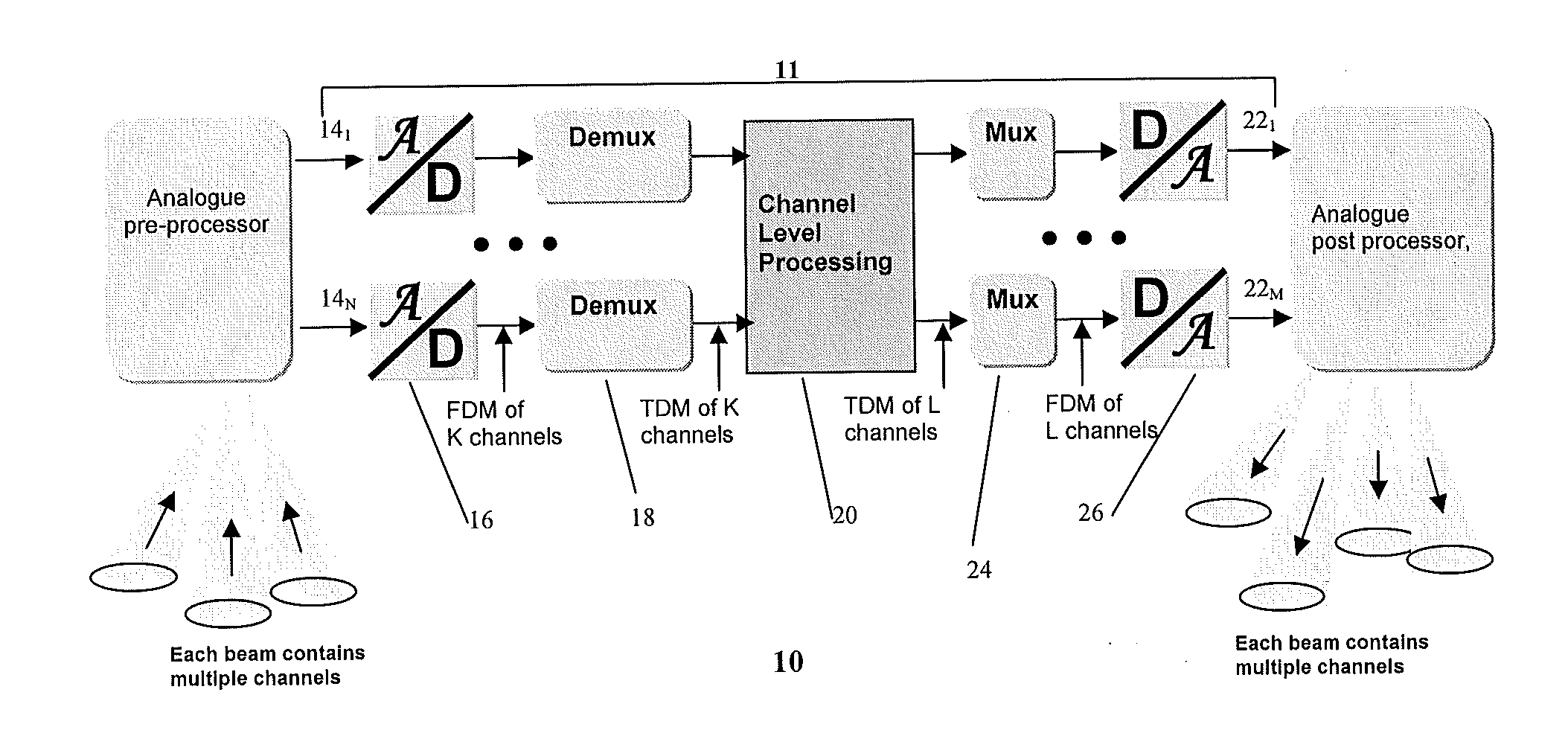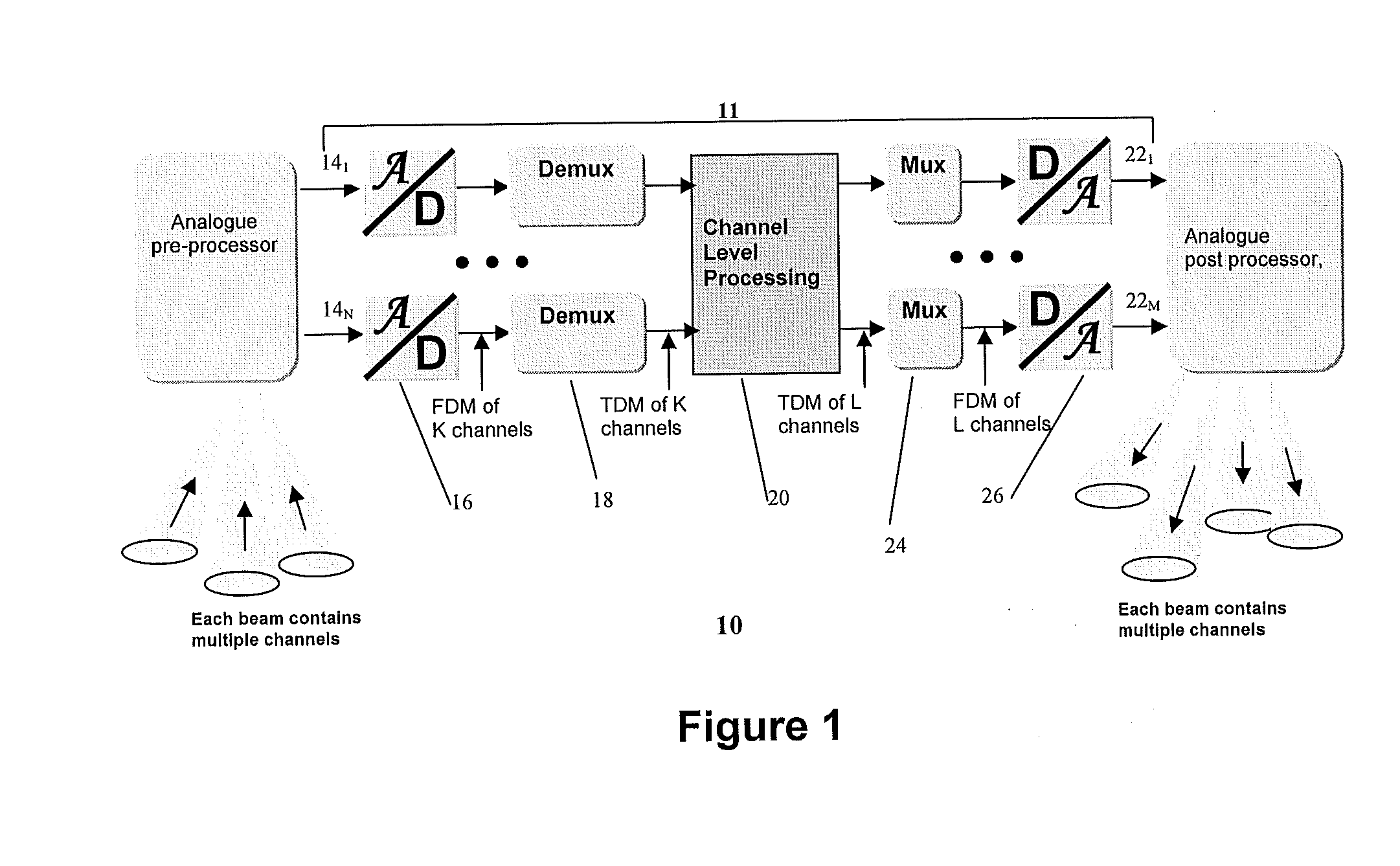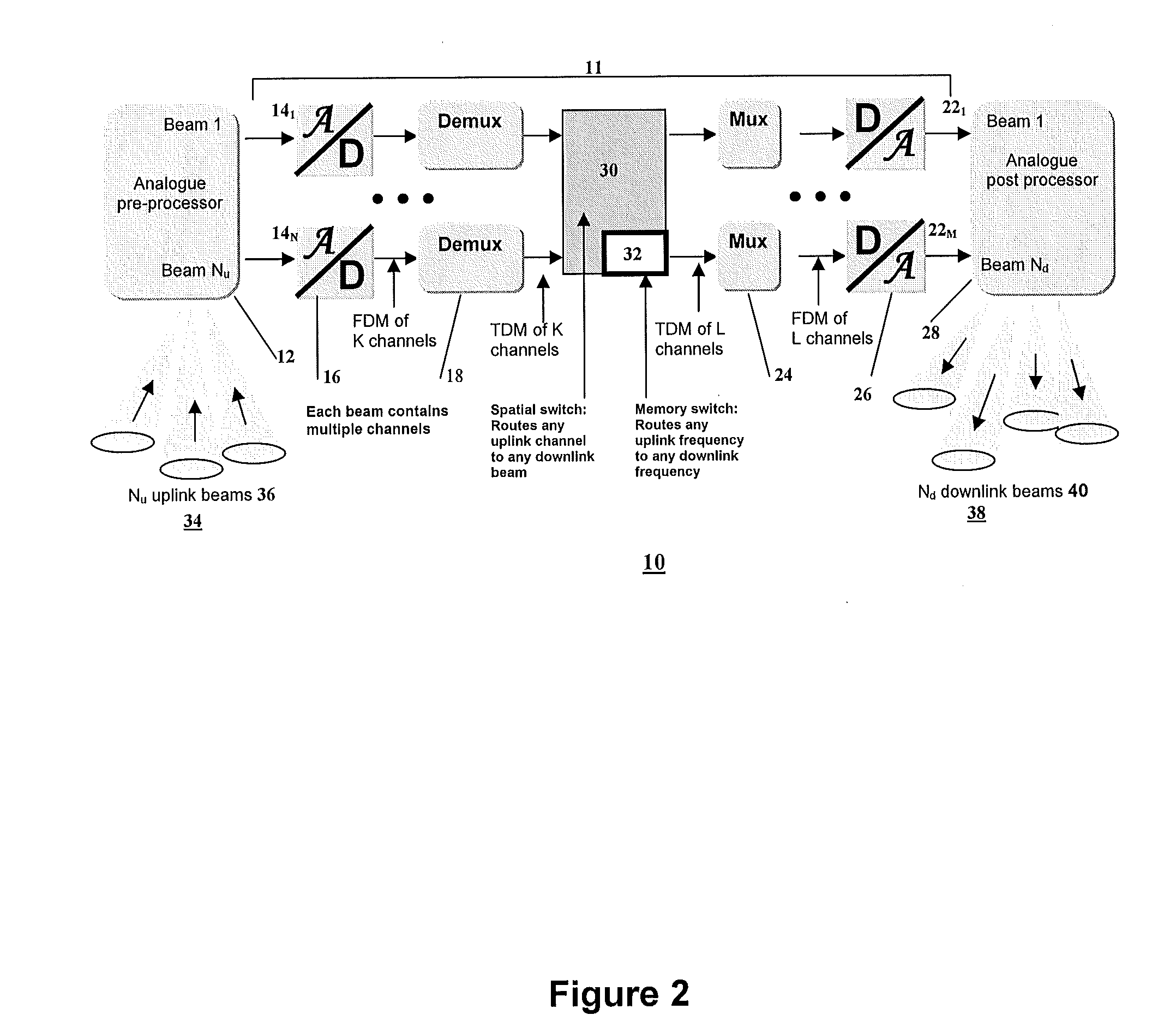Modular digital processing system for telecommunications satellite payloads
- Summary
- Abstract
- Description
- Claims
- Application Information
AI Technical Summary
Benefits of technology
Problems solved by technology
Method used
Image
Examples
Embodiment Construction
[0030]Before describing various embodiments of the present invention, as implemented within various system architectures incorporating either a spatial / memory switch or digital beam-forming processor function, the basic structure of a generic processor module will initially be described.
[0031]Referring to FIG. 1, a generic integrated processor module 10 comprises an analogue pre-processing stage 12 for conditioning input signals before A / D conversion, a digital processor stage 11 comprising a plurality of input ports 141-N, each input port having an A / D converter 16 that converts an input band of interest into digital sample form, and a digital demultiplexer 18 that separates the overall input band into a number of channels. The digital processor stage 11 has a plurality of output ports 221-M, each comprising a digital multiplexer 24 that combines the narrowband channels and a D / A converter 26 to convert the combined signal so as provide the analogue port output signal. An analogue ...
PUM
 Login to View More
Login to View More Abstract
Description
Claims
Application Information
 Login to View More
Login to View More - R&D
- Intellectual Property
- Life Sciences
- Materials
- Tech Scout
- Unparalleled Data Quality
- Higher Quality Content
- 60% Fewer Hallucinations
Browse by: Latest US Patents, China's latest patents, Technical Efficacy Thesaurus, Application Domain, Technology Topic, Popular Technical Reports.
© 2025 PatSnap. All rights reserved.Legal|Privacy policy|Modern Slavery Act Transparency Statement|Sitemap|About US| Contact US: help@patsnap.com



